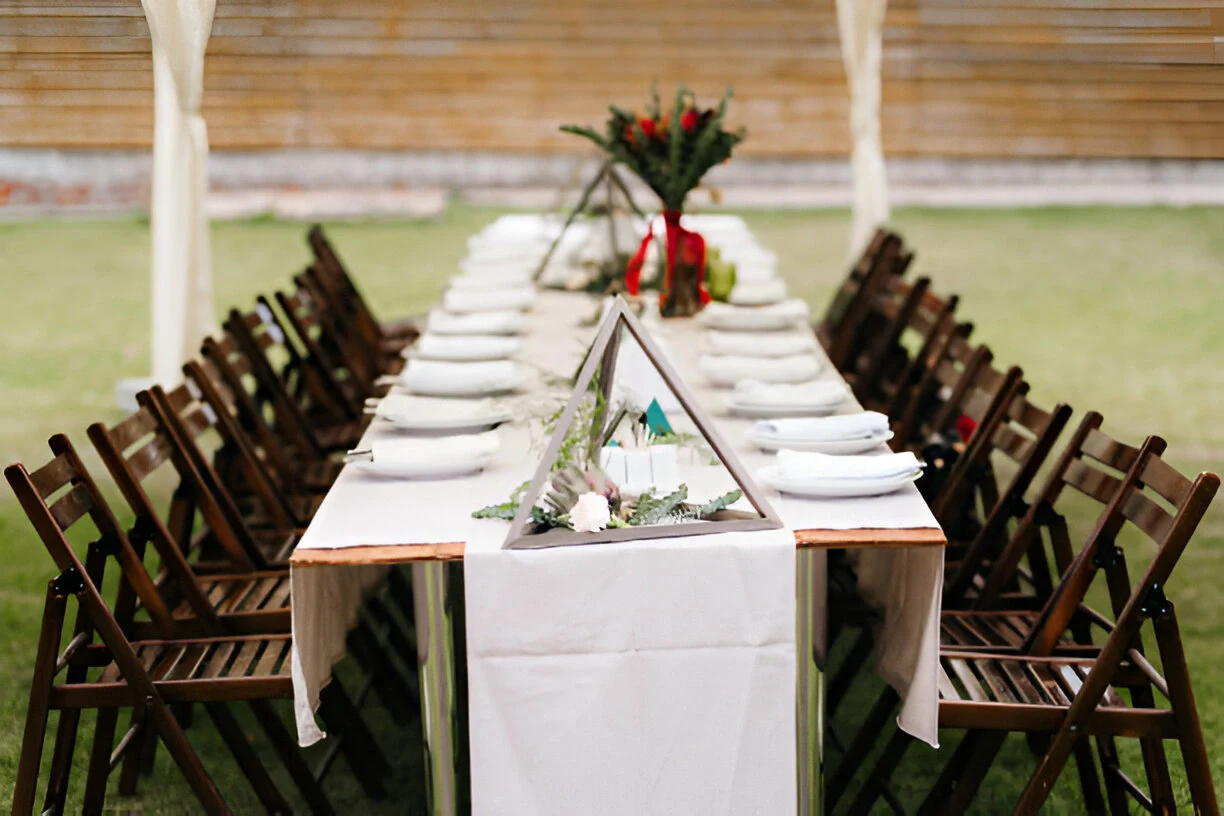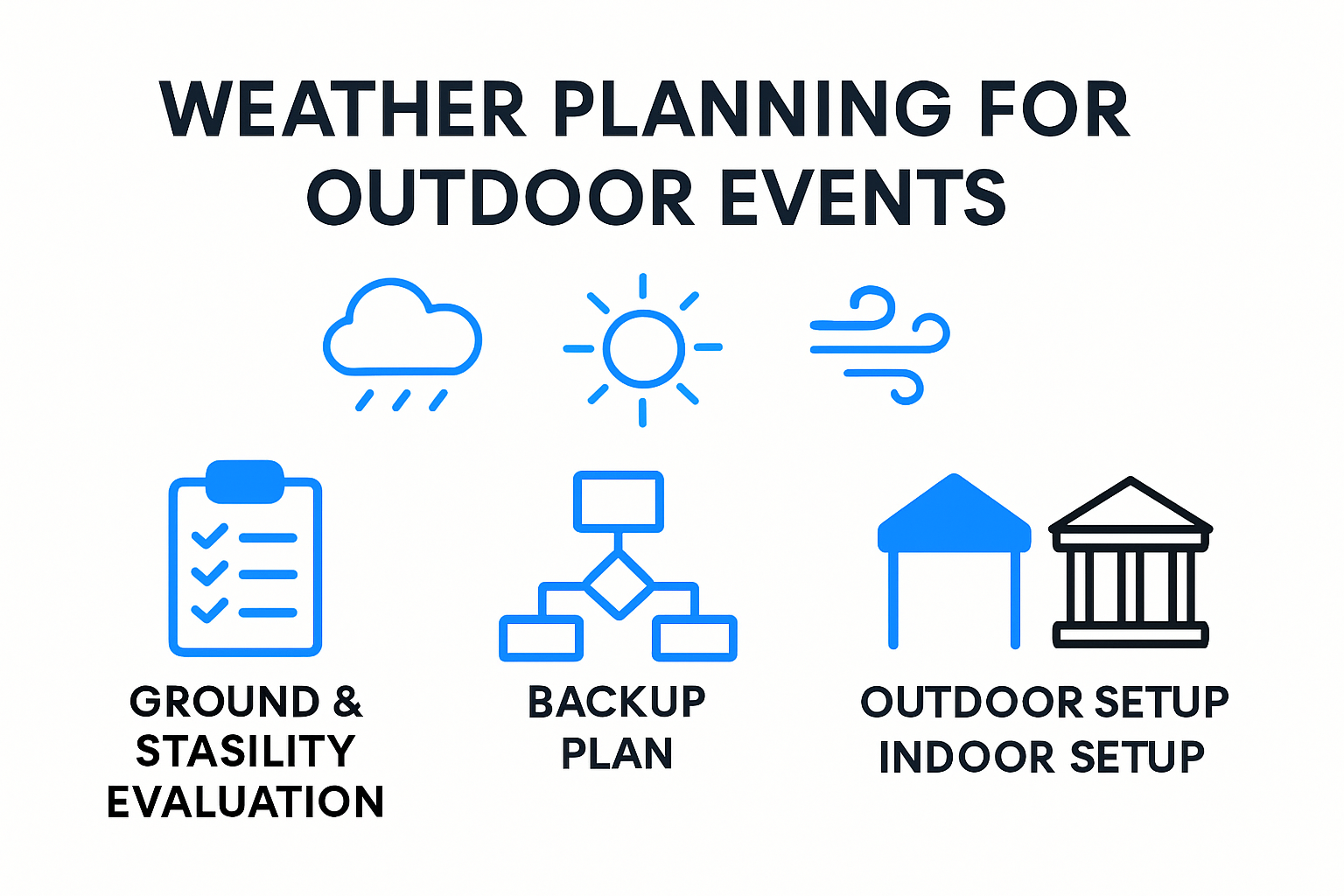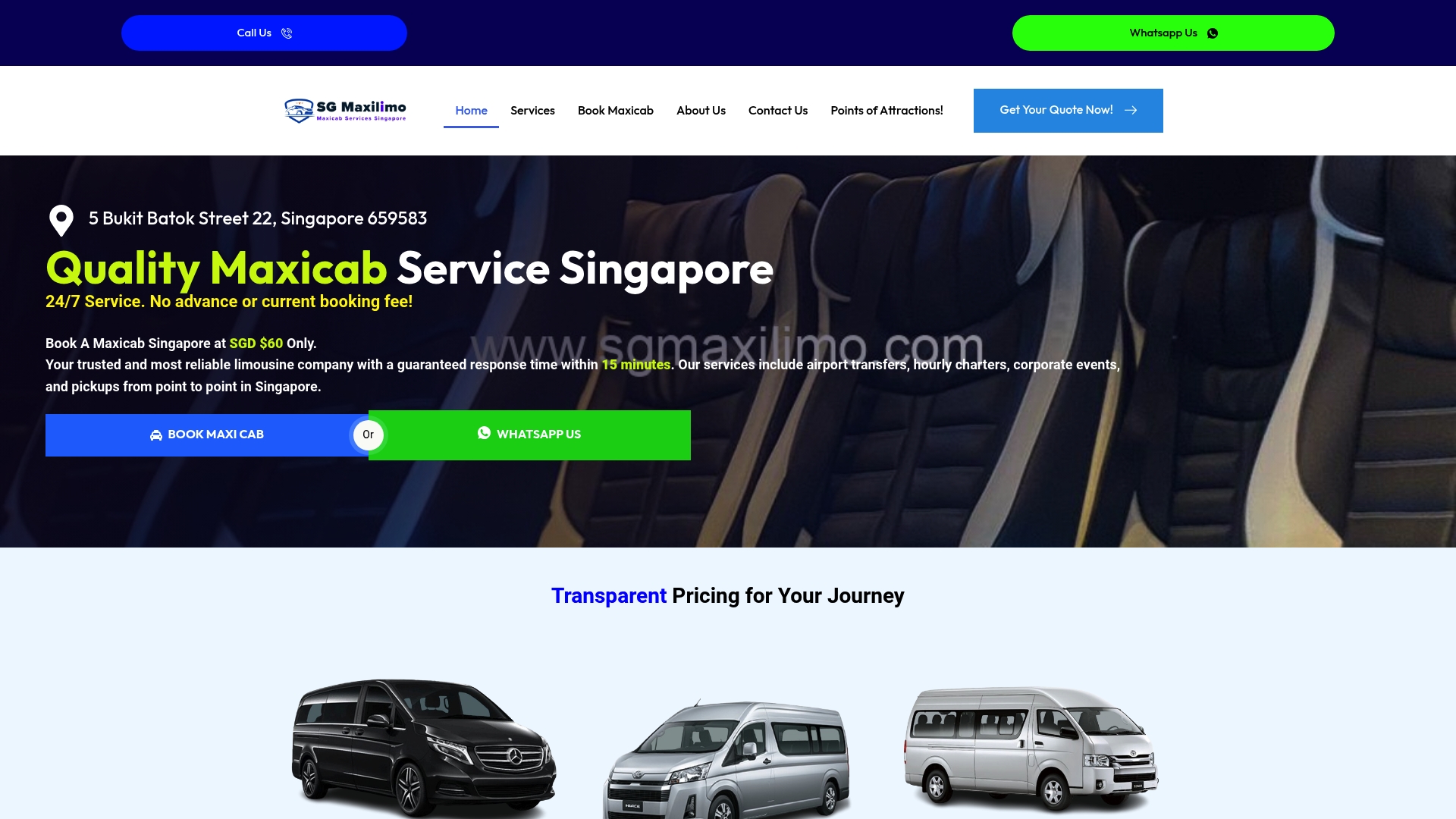Planning Outdoor Events: Essential Steps for Every Organizer
Discover expert tips for planning outdoor events. Learn how to choose venues, manage logistics, and create memorable experiences for every audience.

Outdoor events promise energy, excitement, and endless possibilities. Yet, for every festival that dazzles the crowd, dozens stumble on details that seem minor but make a huge difference. Get this. Surveys show that over 60 percent of attendees say venue accessibility directly affects their event experience. Most planners obsess over decorations or entertainment but miss the fact that one blocked path or lack of shade can ruin the day. The real magic happens when you treat logistical planning as the main act—not just the backdrop.
Table of Contents
- Choosing The Right Outdoor Venue
- Key Logistics For Successful Outdoor Events
- Ensuring Accessibility And Special Accommodations
- Creating Engaging Experiences For All Guests
Quick Summary
| Takeaway | Explanation |
|---|---|
| Choose venues for accessibility | Prioritize locations with good access by public transit, parking, and walking paths for all attendees. |
| Prepare for weather contingencies | Always have backup plans for unexpected weather, including alternative indoor locations if needed. |
| Incorporate diverse engagement strategies | Design interactive experiences, respecting varied abilities and cultural backgrounds to make all guests feel included. |
| Implement comprehensive traffic management | Plan transportation routes and communication to avoid bottlenecks and ensure smooth attendee arrivals and departures. |
| Prioritize environmental protection | Protect natural surroundings by minimizing ground disturbance, managing waste, and respecting the ecosystem during events. |
Choosing the Right Outdoor Venue
Selecting the perfect outdoor venue demands strategic planning and careful consideration. The right location can transform an ordinary event into an extraordinary experience, while the wrong choice can lead to logistical nightmares and potential disappointment.
Assessing Location and Accessibility
When planning outdoor events, accessibility becomes a critical factor. The U.S. National Park Service emphasizes the importance of choosing venues with easy access to communities and public transportation. This approach ensures that participants from diverse backgrounds can attend without unnecessary barriers.
Consider multiple aspects of accessibility:
- Parking Availability: Sufficient parking spaces for attendees
- Public Transit Routes: Proximity to bus or train lines
- Walking Paths: Clear, safe walkways for all mobility levels
- Transportation Alternatives: Options like shuttle services for group transportation
Weather Contingency and Site Evaluation
The University of Colorado Boulder recommends having a comprehensive backup plan for unexpected weather conditions. Professional event organizers understand that outdoor venues require meticulous environmental assessment.
Key evaluation criteria include:
- Ground Stability: Checking terrain for potential drainage issues
- Wind Exposure: Understanding wind patterns and potential impact
- Shade and Sun Coverage: Ensuring comfortable conditions for attendees
- Indoor Backup Location: Reserving an alternative indoor space for sudden weather changes
Environmental Considerations and Resource Protection
The National Mall and Memorial Parks provide critical guidelines for protecting natural environments during outdoor events. Responsible event planning goes beyond logistics it involves preserving the ecological integrity of the chosen location.
Environmental protection strategies include:
- Minimal Ground Disturbance: Using protective turf systems
- Waste Management: Implementing comprehensive recycling and cleanup plans
- Low Impact Setup: Choosing equipment and structures that minimize environmental stress
- Ecological Awareness: Understanding and respecting the natural ecosystem of the venue
Successful outdoor event planning requires a holistic approach. By carefully evaluating location, preparing for contingencies, and respecting environmental constraints, organizers can create memorable experiences that delight participants while maintaining responsible practices.
To help organizers quickly compare key elements when selecting an outdoor venue, the following table summarizes important accessibility and logistical features mentioned in the article.
| Venue Feature | Importance | What to Check |
|---|---|---|
| Parking Availability | Ensures enough spaces for attendees | Number of parking spots |
| Public Transit Access | Simplifies arrival for attendees from various areas | Distance to nearest bus/train stop |
| Walking Paths | Supports safe, easy movement for all mobility levels | Path surface, width, and accessibility |
| Weather Contingency Options | Reduces weather-related disruptions | On-site or nearby indoor spaces reserved |
| Environmental Protections | Preserves natural surroundings | Waste plans, turf protection, minimal setup |
| Shade & Sun Coverage | Promotes attendee comfort | Trees, tents, or temporary coverings |
Key Logistics for Successful Outdoor Events
Planning outdoor events requires meticulous attention to logistical details that can make or break the entire experience. While creative vision drives an event, precision in execution determines its ultimate success.
Transportation and Traffic Management
The Texas A&M Transportation Institute highlights the critical importance of comprehensive traffic management for special events. Effective transportation planning goes beyond simple route mapping and involves strategic coordination across multiple systems.
Key transportation considerations include:
- Route Planning: Identifying optimal arrival and departure pathways
- Congestion Mitigation: Implementing strategies to reduce traffic bottlenecks
- Alternative Transportation: Utilizing shuttle services for efficient attendee movement
- Communication Channels: Using social media and digital message boards to provide real-time traffic updates
The Federal Highway Administration recommends modifying predicted traffic flow routes to maximize system efficiency and providing advance information to attendees about optimal access routes.
Comprehensive Event Infrastructure
MIT Institute Events provides insights into creating a robust event infrastructure that addresses multiple logistical dimensions. Successful outdoor events require seamless integration of various operational elements.
Critical infrastructure elements include:
- Facility Arrangements: Configuring spaces for maximum functionality
- Technical Support: Ensuring reliable power and communication systems
- Safety Protocols: Implementing comprehensive emergency response plans
- Sustainability Considerations: Minimizing environmental impact through thoughtful resource management
Resource Allocation and Budget Management
Effective logistical planning demands precise resource allocation and strategic budgeting. Event organizers must balance financial constraints with the need to deliver a high quality experience.
Resource management strategies involve:
- Detailed Cost Projections: Creating comprehensive budget breakdowns
- Vendor Negotiations: Securing competitive pricing for essential services
- Contingency Planning: Maintaining financial reserves for unexpected expenses
- Value Optimization: Maximizing attendee experience within budgetary limits
Successful outdoor event logistics require a holistic approach that integrates transportation, infrastructure, and financial planning. By anticipating challenges and developing flexible strategies, organizers can create memorable experiences that run smoothly and efficiently.
The following table organizes the core logistical elements necessary for a successful outdoor event, summarizing how each area should be addressed according to the article.
| Logistical Area | Key Considerations | Recommended Actions |
|---|---|---|
| Transportation | Route planning, congestion, communication | Map routes, arrange shuttles, provide real-time info |
| Infrastructure | Facilities, power, safety, sustainability | Arrange seating, verify power, emergency protocols |
| Resource Allocation | Budget, vendors, contingency funds | Project costs, negotiate, keep reserves |
| Environmental Impact | Waste, ground disturbance, ecosystem respect | Plan recycling, use low-impact structures |
Ensuring Accessibility and Special Accommodations
Accessibility is not an afterthought but a fundamental requirement for inclusive event planning. Creating environments that welcome and accommodate all participants demonstrates respect, professionalism, and commitment to diversity.
Understanding Comprehensive Accessibility
The New York City Mayor’s Office for People with Disabilities emphasizes the importance of considering multiple dimensions of accessibility. This approach goes beyond physical accommodations to address visual, auditory, physical, speech, cognitive, and neurological disabilities.
Comprehensive accessibility strategies include:
- Visual Accessibility: Providing large print materials, screen reader compatibility
- Hearing Accommodations: Sign language interpreters, captioning services
- Physical Space Design: Wheelchair accessible routes, appropriate seating arrangements
- Transportation Support: Specialized transportation options for individuals with mobility challenges
Event Communication and Information Delivery
The University of Wisconsin–Madison highlights the critical role of communication in creating inclusive events. Effective information sharing ensures that all participants can engage fully with the event content.
Key communication considerations involve:
- Advance Notification: Providing detailed accessibility information before the event
- Multiple Information Formats: Offering materials in various accessible formats
- Clear Signage: Using high contrast, large print directional information
- Digital Accessibility: Ensuring websites and digital platforms are compatible with assistive technologies
Legal Compliance and Accommodation Protocols
The Massachusetts Office on Disability provides guidance on meeting legal requirements for event accessibility. Compliance is not just about avoiding penalties but creating genuinely inclusive experiences.
Accommodation protocols should address:
- Reasonable Modifications: Proactively identifying and implementing necessary adjustments
- Communication Channels: Establishing clear processes for requesting special accommodations
- Staff Training: Educating event personnel about inclusive practices
- Continuous Improvement: Soliciting feedback to enhance future accessibility
True accessibility extends beyond physical considerations. It represents a commitment to creating environments where every participant feels valued, respected, and fully able to engage. By approaching accessibility as a holistic and integral part of event planning, organizers can create meaningful experiences that celebrate human diversity and individual needs.
Creating Engaging Experiences for All Guests
Designing memorable outdoor events requires more than logistical precision it demands crafting experiences that captivate and connect with participants on multiple levels. The most successful events transform simple gatherings into immersive, interactive journeys that participants will remember long after the day concludes.
Interactive Design and Participation Strategies
Engagement begins with thoughtful event architecture that encourages active participation rather than passive observation. Event Design Institute suggests creating multiple touchpoints where guests can interact with the environment, each other, and event programming.
Key interactive design elements include:
- Activity Zones: Creating designated spaces for different interaction types
- Collaborative Experiences: Designing activities that require group participation
- Technology Integration: Using digital platforms to enhance real-world interactions
- Personalization Options: Allowing guests to customize their event experience
Sensory Experience and Emotional Connection
Experiential Marketing Association emphasizes that truly memorable events engage multiple sensory channels. By designing experiences that stimulate sight, sound, touch, and even smell, organizers can create deeper emotional connections with participants.
Sensory engagement strategies involve:
- Ambient Design: Utilizing environmental elements to create mood
- Sound Landscaping: Incorporating appropriate background music and acoustic environments
- Tactile Interactions: Providing hands-on experiences and touchpoints
- Culinary Experiences: Integrating food and beverage elements that complement the event theme
Inclusive Participation and Diverse Engagement
Universal Design Conference highlights the importance of creating experiences that welcome participants with varied abilities, interests, and backgrounds. Successful events provide multiple entry points for engagement, ensuring no guest feels marginalized.
Inclusive participation approaches include:
- Varied Activity Levels: Offering options for different physical capabilities
- Cultural Sensitivity: Designing experiences that respect diverse backgrounds
- Multilingual Support: Providing information and interactions in multiple languages
- Transportation Flexibility: Ensuring easy access for all participants
Creating engaging experiences is an art form that blends strategic design, psychological insight, and genuine human connection. By prioritizing interactive, sensory-rich, and inclusive approaches, event organizers can transform ordinary gatherings into extraordinary memories that resonate with participants long after the event concludes.
Frequently Asked Questions
What are the key factors to consider when choosing an outdoor venue?
When selecting an outdoor venue, consider accessibility, parking availability, public transit access, walking paths, weather contingency plans, and environmental protections to ensure a successful event experience.
How can I prepare for unexpected weather during an outdoor event?
It’s essential to have a comprehensive backup plan that may include reserving an indoor location in advance, assessing ground stability, and providing shade options to ensure attendee comfort during weather changes.
What strategies can be implemented to enhance accessibility at outdoor events?
To improve accessibility, provide accommodations like wheelchair-accessible routes, large print materials, sign language interpreters, and clear signage to ensure all participants can fully engage with the event.
How can I create engaging experiences for all guests at an outdoor event?
Design interactive elements that promote participation, such as activity zones, collaborative experiences, and sensory engagement strategies. Ensure inclusivity by accommodating diverse abilities and interests through varied activity levels and multilingual support.
Take the Stress Out of Event Transportation Planning
Every successful outdoor event hinges on smooth logistics and seamless attendee arrivals. The article highlights how problems like traffic congestion, accessibility gaps, and unreliable transport can turn a carefully planned gathering into a logistical headache. Whether you are coordinating large group arrivals, need dedicated shuttle services, or require wheelchair-accessible vehicles, these pain points can impact guest satisfaction and event outcomes. Your event deserves professional support tailored to your exact needs.
Ready to transform your event experience? Let the specialists at SG Maxi Limo remove your transportation worries. Choose from a wide range of options, including group maxi cabs, VIP limousines, and vehicles with accessibility features. Fast booking, transparent pricing, and dependable service mean you can focus on creating engaging experiences while we handle the journeys. Book now and ensure every attendee arrives relaxed, on time, and ready to enjoy.


